A Review of Accelerated Pavement Testing Applications in Non-Pavement Research
Abstract
:1. Introduction
2. Background
3. A Review of APT Applications in Non-Pavement Research
3.1. Bridge Research
3.2. Transportation Technology Research
3.3. Drainage Experiments
3.4. Geotechnical Engineering Research
3.5. Automobile Research
3.6. Environmental Research
3.7. Highway Safety Research
3.8. Calibrations, Measurements and Testing of Devices
3.9. Other Miscellaneous Applications
4. Findings
4.1. Summary of Non-Pavement Research Using APT
4.2. Applying Text Analytics to Understand the Trends in Non-Pavement Research Using APT
5. Future Research for the Proposed Test Track in Wyoming and Other APTs
5.1. Connected Vehicles Work Zone Warning Applications
5.2. Smart Infrastructure Systems
5.3. Effects of Freight Truck Platooning on Bridges
5.4. Innovative Sustainable Drainage Systems
5.5. Bridge Research
5.6. Advanced Geotechnical Methods
5.7. Sustainable Fuels
5.8. Unmanned Aerial Systems (UASs)
6. Summary and Conclusions
Author Contributions
Funding
Data Availability Statement
Acknowledgments
Conflicts of Interest
References
- Hugo, F.; Martin, A.E. Significant Findings from Full-Scale Accelerated Pavement Testing: A Synthesis of Highway Practice; NCHRP synthesis; Transportation Research Board: Washington, DC, USA, 2004; ISBN 978-0-309-06974-8. [Google Scholar]
- Jones, D.; Wu, R.; Holland, T.J. Accelerated Traffic Load Testing of Seismic Expansion Joints for the New San Francisco–Oakland Bay Bridge. In Advances in Pavement Design through Full-Scale Accelerated Pavement Testing; Al-Qadi, I., Ed.; CRC Press: Boca Raton, FL, USA, 2012; ISBN 978-0-415-62138-0. [Google Scholar]
- Penn State Engineering: Test Track. Available online: https://www.larson.psu.edu/about/test-track.aspx (accessed on 23 July 2021).
- Worel, B.; Vrtis, M.; Buzz Powell, R. Guidance for the Next Generation Accelerated Pavement Testing Facilities. In Accelerated Pavement Testing to Transport Infrastructure Innovation; Chabot, A., Hornych, P., Harvey, J., Loria-Salazar, L.G., Eds.; Springer International Publishing: Cham, Switzerland, 2020; pp. 40–48. [Google Scholar]
- Worel, B. Non-Pavement Research at MnROAD. Available online: Dot.state.mn.us (accessed on 23 July 2021).
- Metcalf, J.B. Application of Full-Scale Accelerated Pavement Testing. In National Cooperative Highway Research Program; National Research Council (U.S.): Washington, DC, USA, 1996; p. 110. [Google Scholar]
- National Academies of Sciences, Engineering and Medicine. Transportation Research Board NCHRP Synthesis 433: Significant Findings from Full-Scale Accelerated Pavement Testing; The National Academies Press: Washington, DC, USA, 2012. [Google Scholar]
- Abramo, G.; D’Angelo, C.A.; Di Costa, F. Diversification versus Specialization in Scientific Research: Which Strategy Pays Off? Technovation 2019, 82–83, 51–57. [Google Scholar] [CrossRef] [Green Version]
- Cassi, L.; Champeimont, R.; Mescheba, W.; Turckheim, É.d. Analysing Institutions Interdisciplinarity by Extensive Use of Rao-Stirling Diversity Index. PLoS ONE 2017, 12, e0170296. [Google Scholar] [CrossRef]
- Van Rijnsoever, F.J.; Hessels, L.K. Factors associated with disciplinary and interdisciplinary research collaboration. Resear. Policy 2011, 40, 463–472. [Google Scholar] [CrossRef] [Green Version]
- Tompkins, D.; Khazanovich, L. MnROAD Lessons Learned; Minnesota Department of Transportation, Research Services Section: Saint Paul, MN, USA, 2007. [Google Scholar]
- Powell, R.B. A History of Modern Accelerated Performance Testing of Pavement Structures. Adv. Pavement Des. Full-Scale Accel. Pavement Test. 2012, 15–24. [Google Scholar] [CrossRef]
- JvdM Steyn, W.; Hugo, F. Perspectives on Trends in International APT Research. In The Roles of Accelerated Pavement Testing in Pavement Sustainability; Aguiar-Moya, J.P., Vargas-Nordcbeck, A., Leiva-Villacorta, F., Loría-Salazar, L.G., Eds.; Springer International Publishing: Cham, Switzerland, 2016; pp. 211–225. [Google Scholar]
- Choubane, B.; Greene, J. Accelerated Pavement Testing: Celebrating over 100 Years of Innovation and Economic Benefits. Available online: https://trid.trb.org/view/1661233 (accessed on 23 July 2021).
- NCAT Test Track Design, Construction, and Performance. Available online: https://rosap.ntl.bts.gov/view/dot/34127 (accessed on 23 July 2021).
- Steyn, W.J. National Academies of Sciences, Engineering and Medicine Significant Findings from Full-Scale Accelerated Pavement Testing. In National Cooperative Highway Research Program; Transportation Research Board: Washington, DC, USA, 2012; p. 22699. ISBN 978-0-309-22366-9. [Google Scholar]
- Du Plessis, L.; Ulloa-Calderon, A.; Harvey, J.T.; Coetzee, N.F. Accelerated Pavement Testing Efforts Using the Heavy Vehicle Simulator. Int. J. Pavement Res. Technol. 2017. [Google Scholar] [CrossRef]
- MnROAD Home-Office of Materials and Road Research-MnDOT. Available online: https://www.dot.state.mn.us/mnroad/ (accessed on 23 July 2021).
- NZ Transport Agency. Canterbury Accelerated Pavement Testing Indoor Facility A World-Leading Pavement Testing Facility Our Purpose Creating Transport Solutions for a Thriving New Zealand. 2012. Available online: https://www.nzta.govt.nz/resources/captif/ (accessed on 23 July 2021).
- Hornych, P.; Gabet, T.; Nguyen, M.L.; Lédée, F.A.; Duprat, P. Evaluation of a Solution for Electric Supply of Vehicles by the Road, at Laboratory and Full Scale. In Accelerated Pavement Testing to Transport Infrastructure Innovation; Chabot, A., Hornych, P., Harvey, J., Loria-Salazar, L.G., Eds.; Springer International Publishing: Cham, Switzerland, 2020; pp. 689–698. [Google Scholar]
- Highway Research Board. American Association of State and Highway Transportation Officials. In AASHO Road Test; American Association of State and Highway Transportation Officials: Washington, DC, USA, 1962; pp. 1–59. [Google Scholar]
- Bridges. ASCE’s 2021 Infrastructure Report Card|2017. Available online: https://infrastructurereportcard.org/cat-item/bridges/ (accessed on 25 July 2021).
- Sanders, D.H.; Zhang, Y.J. Maintenance of the Highway Infrastructure; National Academy Press: Washington, DC, USA, 1994; p. 169. [Google Scholar]
- Tolliver, D.; Lu, P. Denver Tolliver. Analysis of Bridge Deterioration Rates: A Case Study of the Northern Plains Region Transportation Research Forum Analysis of Bridge Deterioration Rates: A Case Study of the Northern Plains Region. Source J. Transp. Res. Forum 2011, 50, 87–100. [Google Scholar]
- Madanat, S.M.; Karlaftis, M.G.; Mccarthr, P.S. Probabilistic Infrastructure Deterioration Models with Panel Data. J. Infrastruct. Syst. 1997, 3, 4–9. [Google Scholar] [CrossRef]
- AASHO Road Test-Interstate System-Highway History-Federal Highway Administration. Available online: https://www.fhwa.dot.gov/infrastructure/50aasho.cfm (accessed on 23 July 2021).
- Abdel-Halim, M.; Mcclure, R.M.; West, H.H. Overload Behavior of an Experimental Precast Prestressed Concrete Segmental Bridge. PCI J. 1987, 32, 102–123. [Google Scholar] [CrossRef]
- Chehab, G.R.; Palomino, A.; Tang, X. Laboratory Evaluation & Specification Development for Geogrids for Highway Engineering Applications. 2007. Available online: https://trid.trb.org/view/815080 (accessed on 23 July 2021).
- Intelligent Transportation Systems-Connected Vehicle Basics. Available online: https://www.its.dot.gov/cv_basics/cv_basics_what.htm (accessed on 23 July 2021).
- Shankwitz, C. Autonomous Vehicle Guidance Evaluation. 1995. Available online: https://www.cts.umn.edu/publications/report/autonomous-vehicle-guidance-evaluation (accessed on 23 July 2021).
- Alexander, L.; Bajikar, S.; Lim, H.-M.; Morellas, V.; Morris, T.; Donath, M. Safetruck: Sensing and Control to Enhance Vehicle Safety. 1997. Available online: https://conservancy.umn.edu/handle/11299/155115 (accessed on 23 July 2021).
- Rakauskas, M.; Ward, N.; Shankwitz, C.; Donath, M. System Performance and Human Factors Evaluation of the Driver Assistive System (DAS): Supplemental Track Test Evaluation. 2003. Available online: https://conservancy.umn.edu/handle/11299/785 (accessed on 23 July 2021).
- OTA Publications|WesTrack. Available online: https://library.unt.edu/gpo/OTA/pubs/superpave/westrack.html (accessed on 23 July 2021).
- Auburn University. Transportation Innovation. Available online: https://eng.auburn.edu/asee/2018/transportation.html (accessed on 22 July 2021).
- National Center for Asphalt Technology. Available online: https://eng.auburn.edu/research/centers/ncat/ (accessed on 23 July 2021).
- Janssen, G.R.; Zwijnenberg, J.; Blankers, I.J.; de Kruijff, J.S. Truck platooning: Driving the future of transportation. 2015. Available online: https://repository.tno.nl/islandora/object/uuid%3A778397eb-59d3-4d23-9185-511385b91509 (accessed on 23 July 2021).
- Tompkins, D.M.; Khazanovich, L.; Asce, M.; Johnson, D.M. Overview of the First Ten Years of the Minnesota Road Research Project. J. Transp. Eng. 2007, 133, 599–609. [Google Scholar] [CrossRef]
- Gurjar, J.; Kumar Agarwal, P.; Kumar Sharma, M. A Framework for Quantification of Effect of Drainage Quality on Structural and Functional Performance of Pavement. Int. J. Eng. Res. 2013, 2, 259–265. [Google Scholar]
- Rokade, S.; Agarwal, P.K.; Shrivastava, R. Study on drainage related performance of flexible highway pavements. Int. J. Adv. Eng. Technol. 2012, 3, 334–337. [Google Scholar]
- Mateos, A.; Balay, J.M. Implementation of APT Facilities in Developing Countries Development of Improved Guidelines and Designs for Thin Bonded Concrete Overlays of Asphalt Pavements (BCOA) View Project Implementation of APT Facilities in Developing Countries. In Proceedings of the 3rd International Conference on Accelerated Pavement Testing, Madrid, Spain, 1–3 October 2008. [Google Scholar]
- Greene, J. Florida Department of TRANSPORTATION FDOT’s Concrete Test Road. 2016. Available online: https://www.fdot.gov/materials/quality/programs/materialsacceptance/documentation/concrete.shtm (accessed on 23 July 2021).
- Petersen, D.L. Continuous Compaction Control MnROAD Demonstration. 2005. Available online: https://trid.trb.org/view/869410 (accessed on 23 July 2021).
- Camargo, F.; Larsen, B.; Chadbourn, B.; Roberson, R.; Siekmeier, J. Intelligent compaction: A Minnesota case history. In Proceedings of the 54th Annual University of Minnesota Geotechnical Conference, Maplewood, MN, USA, 17 February 2006; Volume 17. [Google Scholar]
- Worel, B.; Deusen, D.V. Benefits of MnROAD Phase-II Research. 2015. Available online: https://trid.trb.org/view/1393053 (accessed on 23 July 2021).
- Gross Domestic Product, Second Quarter 2020 (Advance Estimate) and Annual Update|U.S. Bureau of Economic Analysis (BEA). Available online: https://www.bea.gov/news/2020/gross-domestic-product-2nd-quarter-2020-advance-estimate-and-annual-update (accessed on 23 July 2021).
- Jahanshahi, A.A.; Gashti, M.A.H.; Mirdamadi, S.A.; Nawaser, K.; Khaksar, S.M.S. Study the effects of customer service and product quality on customer satisfaction and loyalty. Int. J. Humanit. Soc. Sci. 2011, 1, 253–260. [Google Scholar]
- Greene, J.; Choubane, B.; Jackson, N.M. Benefits Achieved from Florida’s Accelerated Pavement Testing Program. 2013. Available online: https://trid.trb.org/view/1240743 (accessed on 23 July 2021).
- Aunis, J.; Balay, J.M. An Applied Research Programme on Continuous Reinforced Concrete Pavements: The FABAC project. In Proceedings of the 8th International Symposium on Concrete Roads, Lisbon, Portugal, 8–11 September 1998; pp. 13–16. [Google Scholar]
- Biesboer, D.D.; Elfering, J. Improving the Design of Roadside Ditches to Decrease Transportation-Related Surface Water Pollution. 2003. Available online: https://conservancy.umn.edu/handle/11299/783 (accessed on 23 July 2021).
- Gale, S.W.; Biesboer, D.D. The Effect of Novel Soil Amendments on Roadside Establishment of Cover Crop and Native Prairie Plant Species. 2004. Available online: https://conservancy.umn.edu/handle/11299/1134 (accessed on 23 July 2021).
- Migletz, J.; Graham, J.L. Long-Term Pavement Marking Practices: A Synthesis of Highway Practice; Transportation Research Board: Washington, DC, USA, 2002. [Google Scholar]
- Synthesis of Pavement Marking Research. Available online: www.Safety.Fhwa.Dot.Gov (accessed on 24 July 2021).
- Choubane, B.; Gokhale, S.; Fletcher, J. Feasibility of Accelerated Pavement Testing to Evaluate Long-Term Performance of Raised Pavement Markers. Transp. Res. Rec. 2006, 1948, 108–113. [Google Scholar] [CrossRef]
- Donnell, E.T.; Chehab, G.R.; Tang, X.; Schall, D. Exploratory Analysis of Accelerated Wear Testing to Evaluate Performance of Pavement Markings. Transp. Res. Rec. 2009, 2107, 76–84. [Google Scholar] [CrossRef]
- Torbic, D.; Elefteriadou, L.; El-Gindy, M. Development of Rumble Strip Configurations That Are More Bicycle Friendly. Transp. Res. Rec. 2001, 1773, 23–31. [Google Scholar] [CrossRef]
- Eisenberg, D.; Warner, K.E. Effects of Snowfalls on Motor Vehicle Collisions, Injuries and Fatalities. Am. J. Public Health 2005, 95, 120–124. [Google Scholar] [CrossRef]
- Al-Qadi, I.L.; Loulizi, A.; Flintsch, G.W.; Roosevelt, D.S.; Decker, R.; Wambold, J.C.; Nixon, W.A. NCHRP Web Document 53 (Project 6–14): Contractor’s Final Report Feasibility of Using Friction Indicators to Improve Winter Maintenance Operations and Mobility. 2002. Available online: https://trid.trb.org/view/734690 (accessed on 23 July 2021).
- Salimi, S.; Nassiri, S.; Bayat, A. Using Lateral Coefficient of Friction to Evaluate Effectiveness of Plowing and Sanding Operations. Can. J. Civ. Eng. 2014, 41, 977–985. [Google Scholar] [CrossRef]
- Hayhoe, G. Application of Hot Sand for Winter Ice Control: Laboratory Phase. 1984. Available online: https://trid.trb.org/view/206477 (accessed on 23 July 2021).
- Root, W.H.; Kennedy, G.D.; Marsh, B.W.; Woods, K.B.; Staff, E.; Burggraf, F.; Miller, W.J. Highway Research Board Officers Aiid Members of the Executive Committee 1954 Officers Automobile Association. Available online: https://www.google.com.hk/url?sa=t&rct=j&q=&esrc=s&source=web&cd=&ved=2ahUKEwjE-ICP6vjxAhWiIaYKHXvHBwQQFjABegQIBBAD&url=https%3A%2F%2Fonlinepubs.trb.org%2FOnlinepubs%2Fhrbbulletin%2F205%2F205.pdf&usg=AOvVaw37lCN2_JqwdhlJFWdKmXUr (accessed on 23 July 2021).
- Greenslade, F.R. Electronic Upgrade of a Standard Benkelman Beam to Enable Capture of Full Bowl Deflections. In The Roles of Accelerated Pavement Testing in Pavement Sustainability; Aguiar-Moya, J.P., Vargas-Nordcbeck, A., Leiva-Villacorta, F., Loría-Salazar, L.G., Eds.; Springer International Publishing: Cham, Switzerland, 2016; pp. 659–669. [Google Scholar]
- Siekmeier, J.; Pinta, C.; Merth, S.; Jensen, J.; Davich, P. Using the Dynamic Cone Penetrometer and Light Weight Deflectometer for Construction Quality Assurance. 2009. Available online: https://rosap.ntl.bts.gov/view/dot/39897 (accessed on 23 July 2021).
- Loken, M. Current State of the Art and Practice of Using GPR for Minnesota Roadway Applications. 2005. Available online: http://webcache.googleusercontent.com/search?q=cache:IB0bGGL_JwQJ:citeseerx.ist.psu.edu/viewdoc/download%3Fdoi%3D10.1.1.562.470%26rep%3Drep1%26type%3Dpdf+&cd=1&hl=en&ct=clnk&gl=hk (accessed on 23 July 2021).
- Tompkins, D. Undefined Benefits of the Minnesota Road Research Project. 2008, pp. 12–19. Available online: Journals.sagepub.com (accessed on 23 July 2021).
- Burnham, T. 93-In Situ Foundation Characterization Using Dynamic Cone Penetrometer. Available online: https://trid.trb.org/view/381424 (accessed on 23 July 2021).
- Thomas, J.; Mn/DOT Pavement Smoothness Measuring Device Certification Program: Commercially Unpublished Report. Minnesota Department of Transportation. 2005. Available online: http://www.dot.state.mn.us/onlinelearning/mrr/pavementsmoothness/ (accessed on 27 July 2021).
- Jones, D.; Wu, R.Z.; Tsai, B.; Barros, C.; Peterson, J. Accelerated Loading, Laboratory and Field Testing Studies to Fast-Track the Implementation of Warm Mix Asphalt in California; Taylor & Francis Group: Milton, UK, 2012. [Google Scholar]
- Farshidi, F.; Jones, D.; Kumar, A.; Green, P.G.; Harvey, J.T. Direct Measurements of Volatile and Semivolatile Organic Compounds from Hot- and Warm-Mix Asphalt. Transp. Res. Rec. 2011, 2207, 1–10. [Google Scholar] [CrossRef]
- Federal Emergency Management Agency (FEMA). Available online: https://www.fema.gov/emergency-managers/national-preparedness/exercises (accessed on 25 July 2021).
- Faria, J.R. Terrorist Innovations and Anti-Terrorist Policies. Terror. Political Violence 2007, 18, 47–56. [Google Scholar] [CrossRef]
- Boyer, R.C.; Scherer, W.T.; Smith, M.C. Trends over Two Decades of Transportation Research: A Machine Learning Approach. Transp. Res. Rec. 2017, 2614, 1–9. [Google Scholar] [CrossRef]
- Steyn, W.J. Future APT–Thoughts on Future Evolution of APT. In Accelerated Pavement Testing to Transport Infrastructure Innovation; Chabot, A., Hornych, P., Harvey, J., Loria-Salazar, L.G., Eds.; Springer International Publishing: Cham, Switzerland, 2020; pp. 708–717. [Google Scholar]
- About-Voyant Tools Help. Available online: https://voyant-tools.org/docs/#!/guide/about (accessed on 12 July 2021).
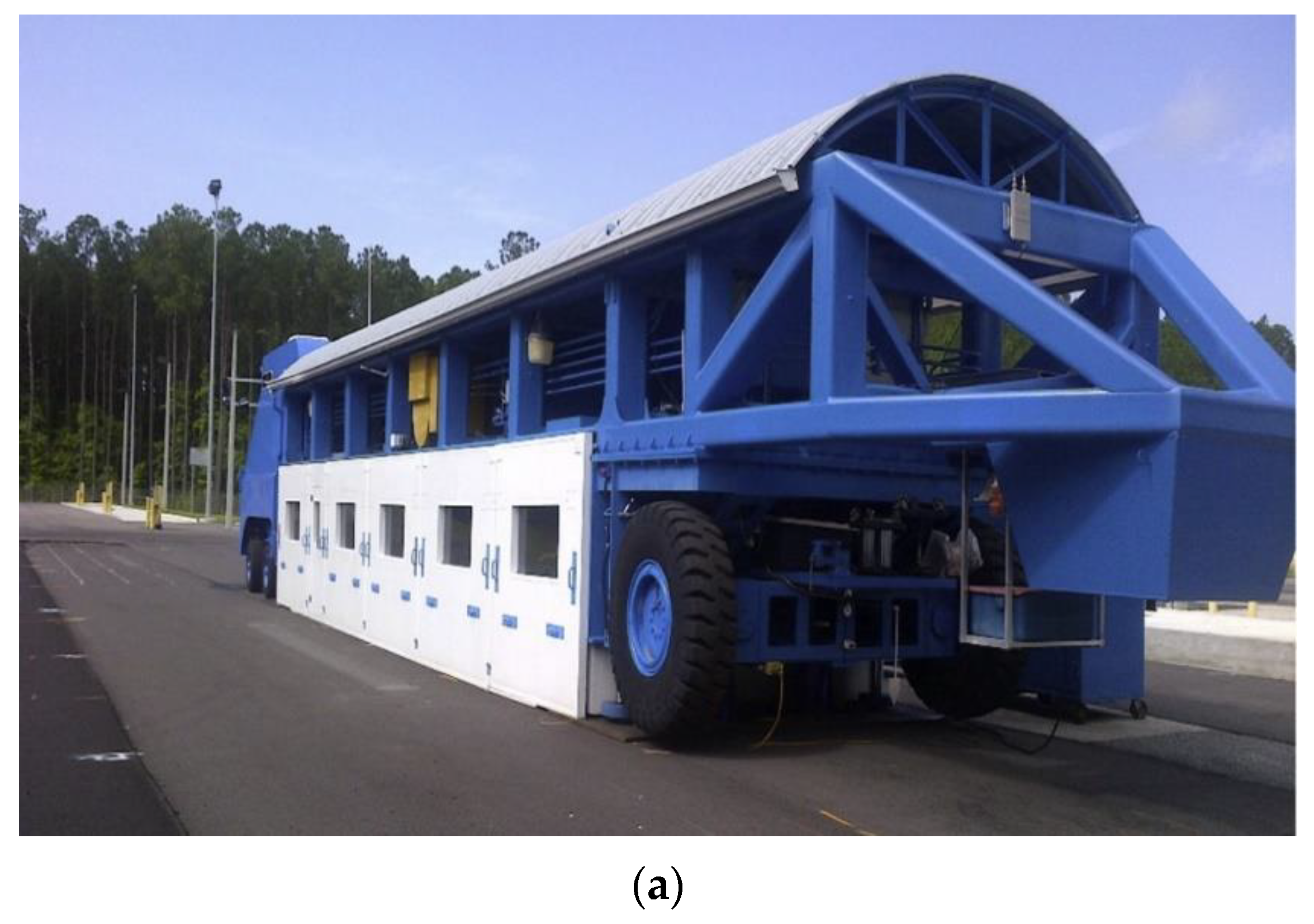

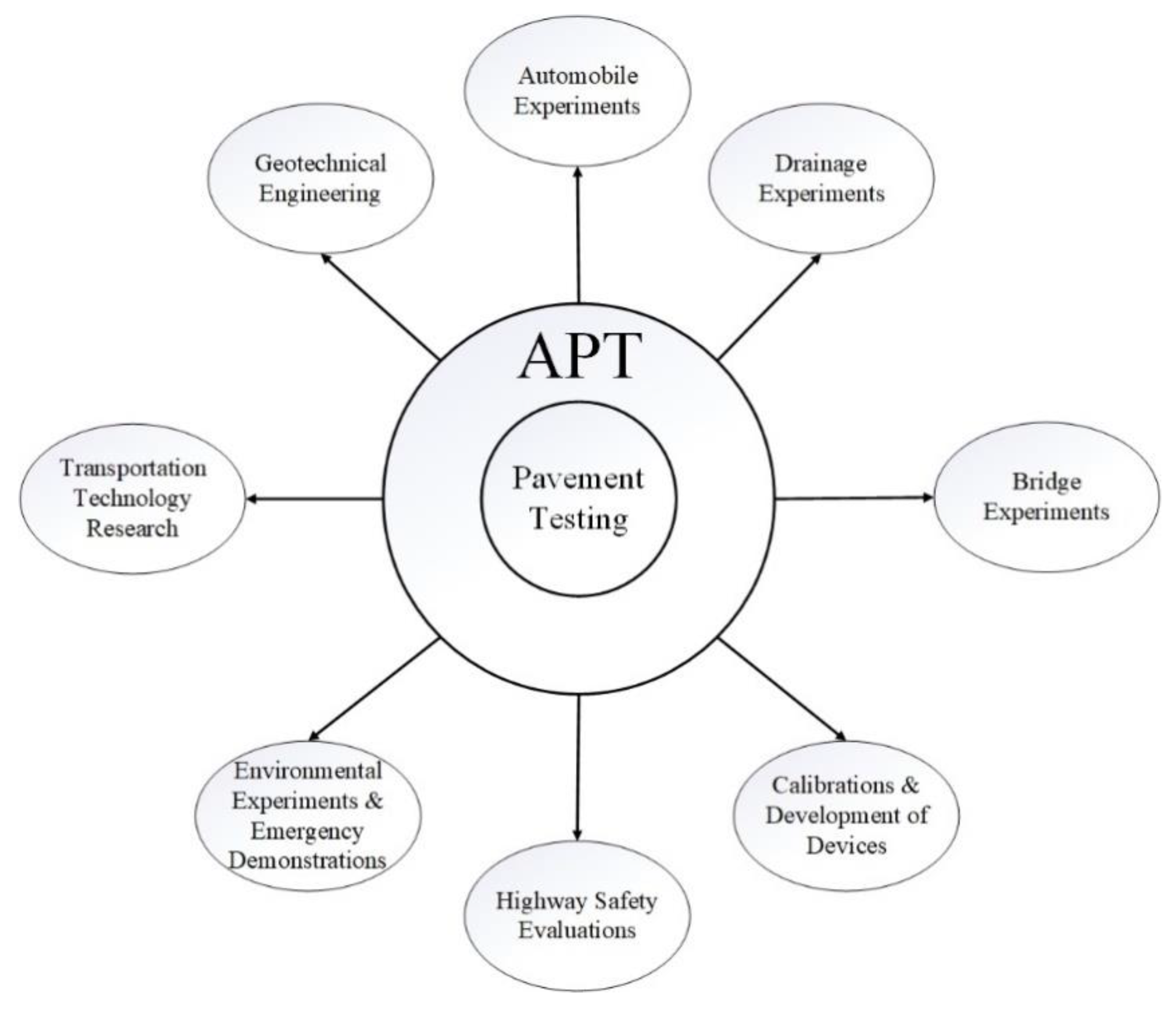
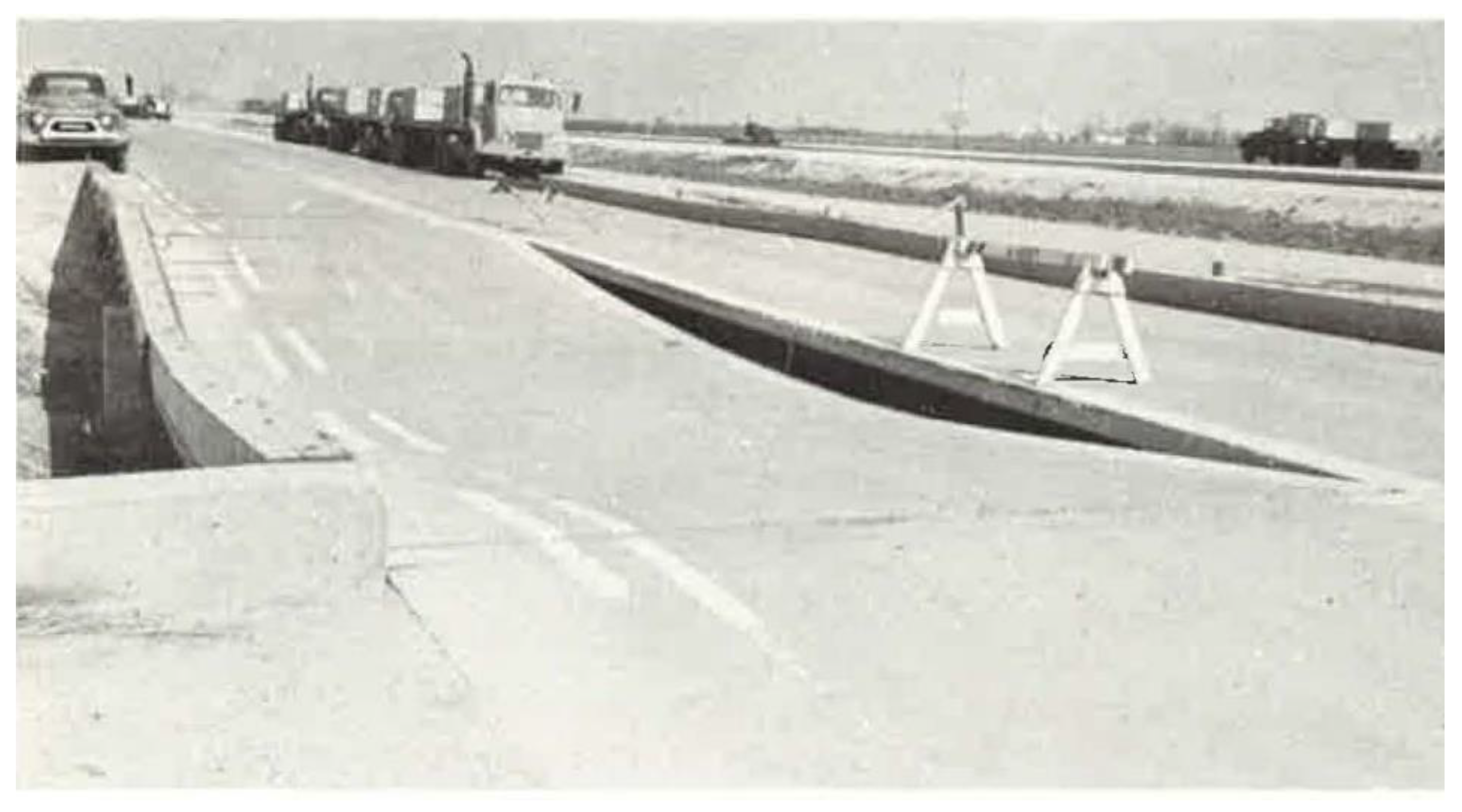
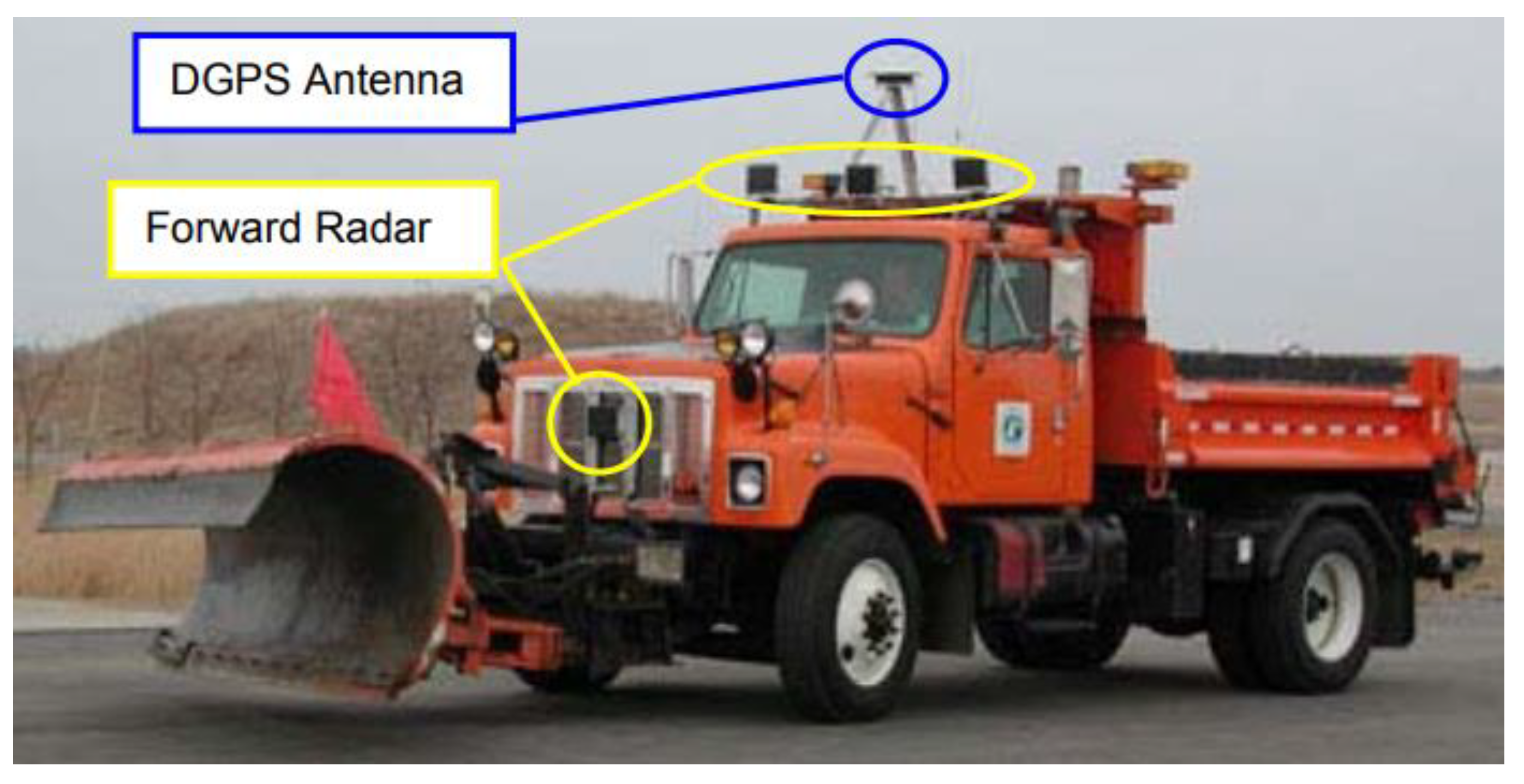
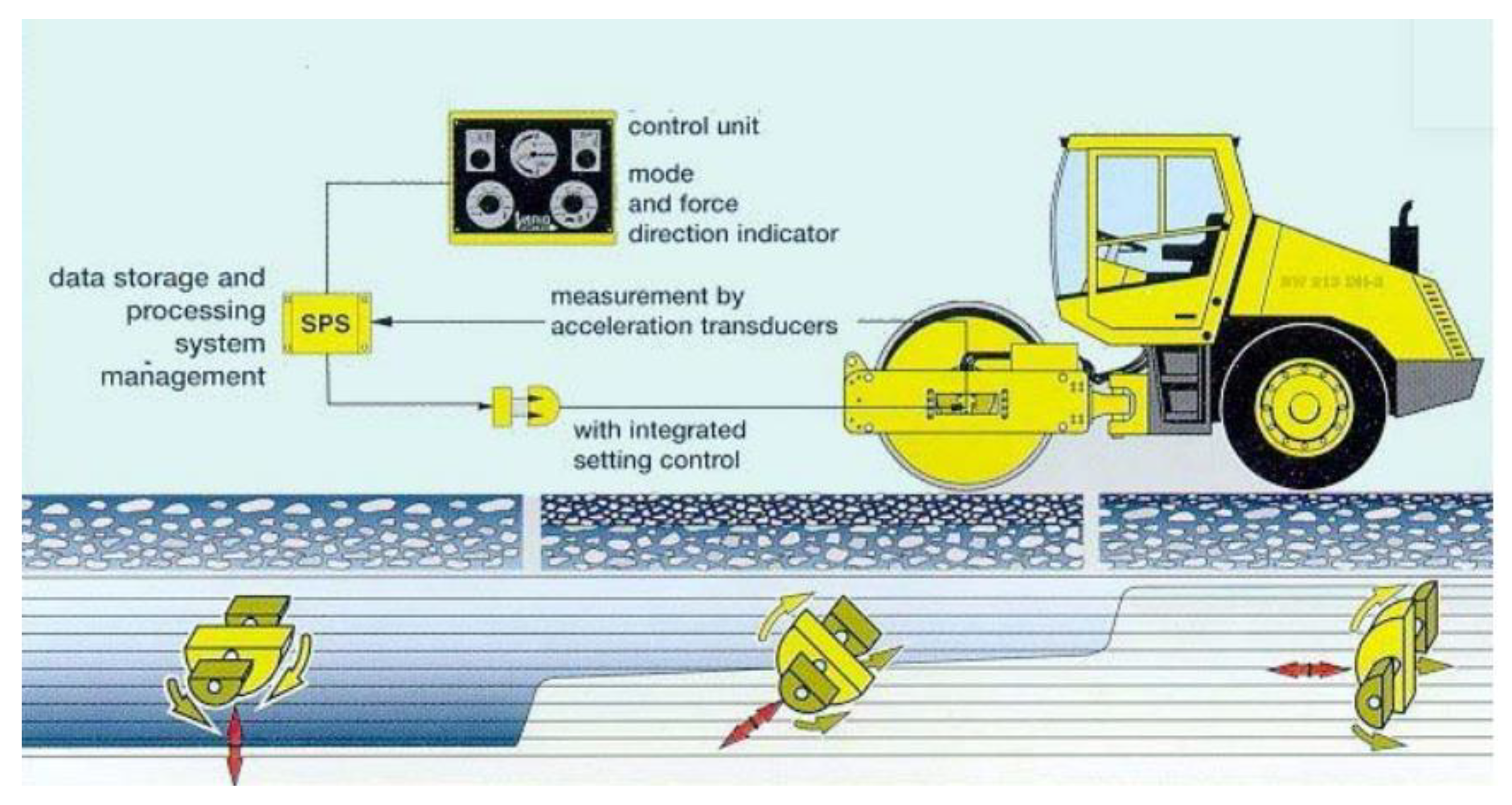
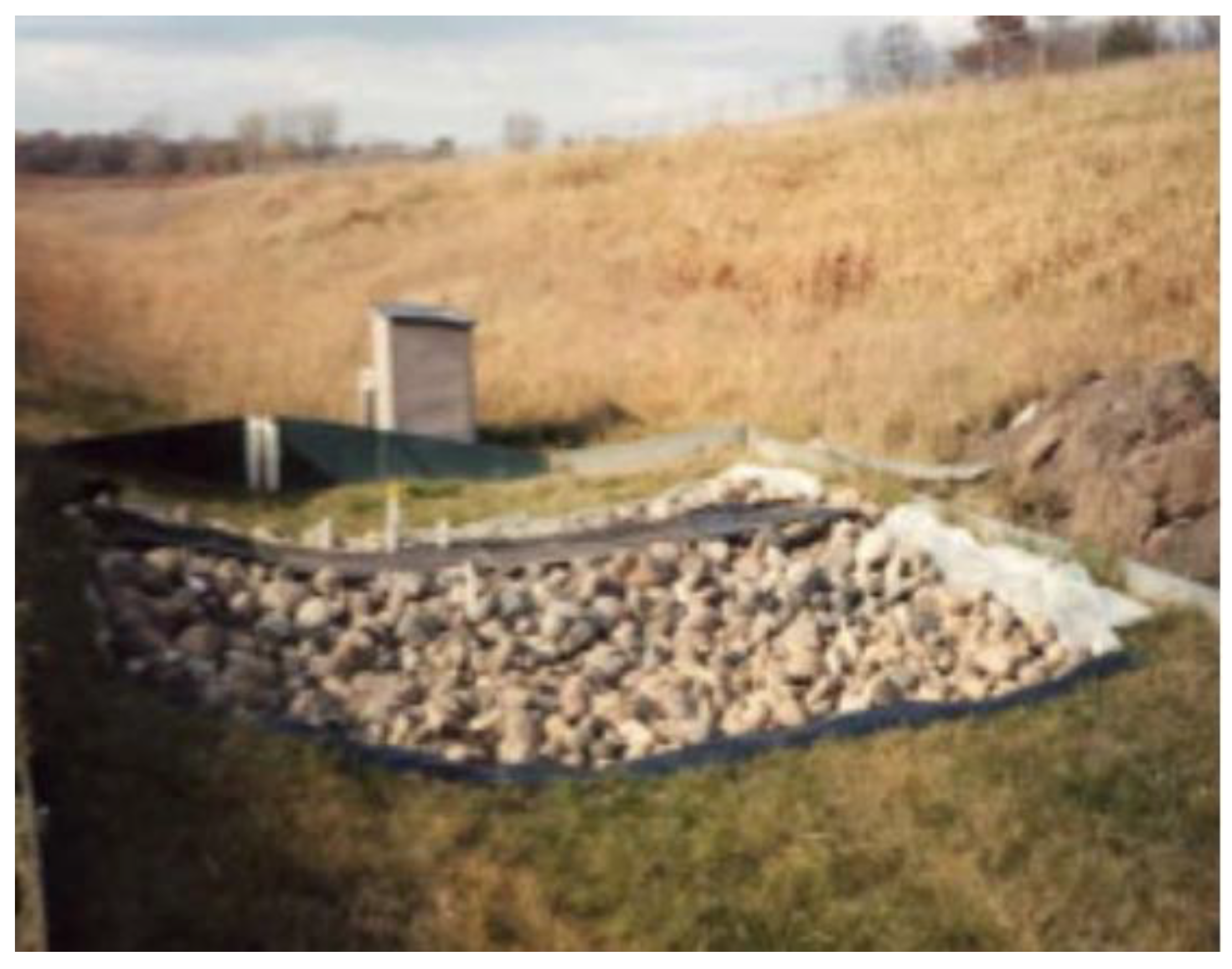
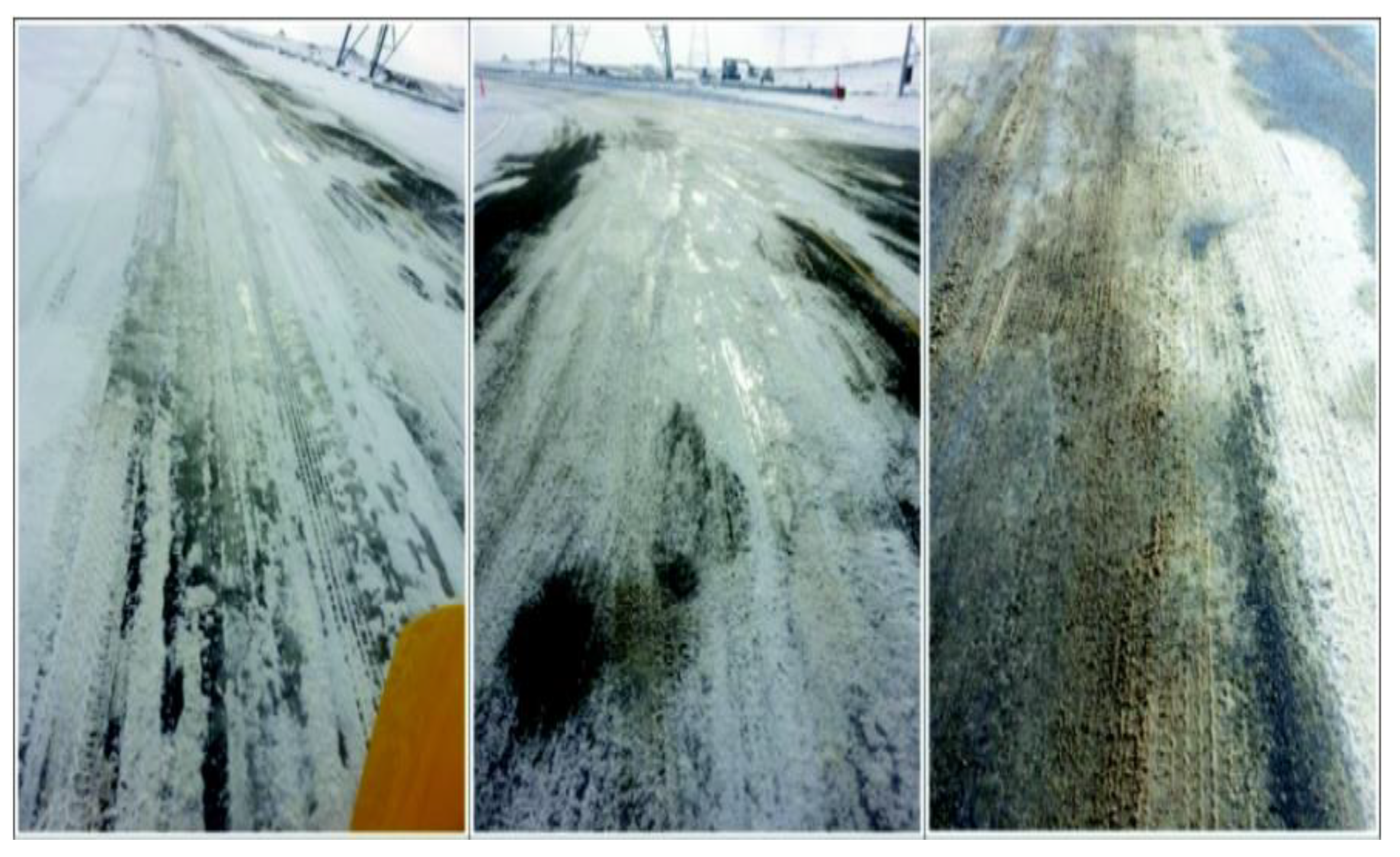
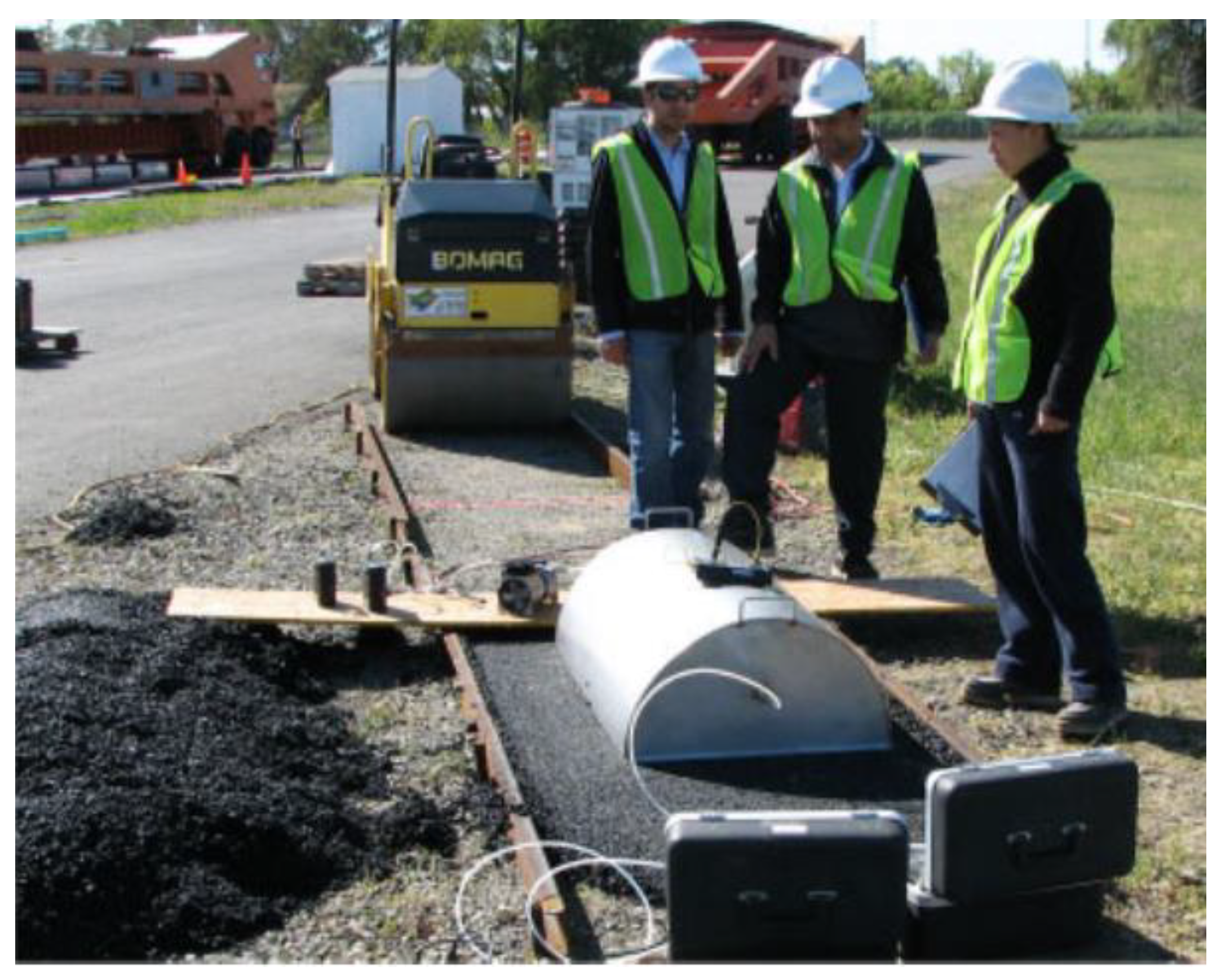

| Research Application | APT Type | ||
|---|---|---|---|
| Test Road | HVS | MLS/Circular Tracks | |
| Bridges | AASHO Road Test PTI | Cal-APT | |
| Transportation Technology Research | MnROAD WesTrack NCAT Test track PTI | ||
| Drainage Experiments | MnROAD FDOT Concrete Test Road | Brazil APT | |
| Geotechnical Investigation | NCAT MnROAD | USACE CRREL | University of Los Andes in Colombia |
| Automobile | AASHO Road Test PTI NCAT Test track MnROAD | FDOT | FABAC machine |
| Environmental Research | NCAT Test track MnROAD | ||
| Highway Safety | NCAT Test Track PTI | FDOT FAA IRRF | MMLS3 |
| Calibrations, Measurements and Testing Devices | AASHO Road Test WASHO Road Test NCAT Test Track MnROAD | Cal-APT | CAPTIF |
| Miscellaneous Emergency response Haulage Utilities Security | NCAT Test MnROAD PTI | USACE CRREL | |
| Rank | Word Term | Non-Pavement Term | Count | Trend |
|---|---|---|---|---|
| 1 | investigate | 11 | 0.022267 | |
| 2 | develop | 10 | 0.020243 | |
| 3 | evaluate | 9 | 0.018219 | |
| 4 | test | 9 | 0.018219 | |
| 5 | bridge | 6 | 0.012146 | |
| 6 | 6 | 0.012146 | ||
| 7 | autonomous | 4 | 0.008097 | |
| 8 | markings | 4 | 0.008097 | |
| 9 | measurement | 4 | 0.008097 | |
| 10 | pavement | 4 | 0.008097 | |
| 11 | systems | 4 | 0.008097 | |
| 12 | WIM (weigh-in-motion) | 4 | 0.008097 |
Publisher’s Note: MDPI stays neutral with regard to jurisdictional claims in published maps and institutional affiliations. |
© 2021 by the authors. Licensee MDPI, Basel, Switzerland. This article is an open access article distributed under the terms and conditions of the Creative Commons Attribution (CC BY) license (https://creativecommons.org/licenses/by/4.0/).
Share and Cite
Fosu-Saah, B.; Hafez, M.; Ksaibati, K. A Review of Accelerated Pavement Testing Applications in Non-Pavement Research. CivilEng 2021, 2, 612-631. https://doi.org/10.3390/civileng2030034
Fosu-Saah B, Hafez M, Ksaibati K. A Review of Accelerated Pavement Testing Applications in Non-Pavement Research. CivilEng. 2021; 2(3):612-631. https://doi.org/10.3390/civileng2030034
Chicago/Turabian StyleFosu-Saah, Benjamin, Marwan Hafez, and Khaled Ksaibati. 2021. "A Review of Accelerated Pavement Testing Applications in Non-Pavement Research" CivilEng 2, no. 3: 612-631. https://doi.org/10.3390/civileng2030034
APA StyleFosu-Saah, B., Hafez, M., & Ksaibati, K. (2021). A Review of Accelerated Pavement Testing Applications in Non-Pavement Research. CivilEng, 2(3), 612-631. https://doi.org/10.3390/civileng2030034






